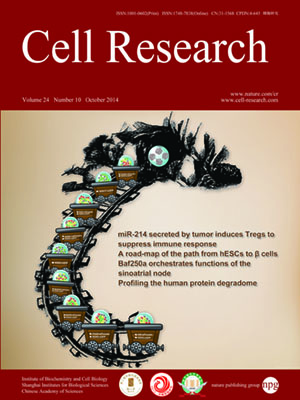
Volume 24, No 10, Oct 2014
ISSN: 1001-0602
EISSN: 1748-7838 2018
impact factor 17.848*
(Clarivate Analytics, 2019)
Volume 24 Issue 10, October 2014: 1274-1277 | Open Access
LETTERS TO THE EDITOR
The willow genome and divergent evolution from poplar after the common genome duplication
Xiaogang Dai1,*, Quanjun Hu2,*, Qingle Cai3,*, Kai Feng1,*, Ning Ye1,*, Gerald A Tuskan4,*, Richard Milne5, Yingnan Chen1, Zhibing Wan1, Zefu Wang2, Wenchun Luo2, Kun Wang2, Dongshi Wan2, Mingxiu Wang1, Jun Wang3, Jianquan Liu2 and Tongming Yin1
1The Southern Modern Forestry Collaborative Innovation Center, Nanjing Forestry University, Nanjing 210037, China
2State Key Laboratory of Grassland Agro-Ecosystem, College of Life Science, Lanzhou University, Lanzhou 730000, China
3BGI-Shenzhen, Shenzhen 518083, China
4Bio-Sciences Division, Oak Ridge National Laboratory, Oak Ridge, TN 37831, USA
5Institute of Molecular Plant Science, The University of Edinburgh, Daniel Rutherford Building, King's Buildings, Mayfield Road, Edinburgh EH9, 3JH, UK
Correspondence: Tongming Yin, E-mail: tmyin@njfu.edu.cn; Jianquan Liu, E-mail: liujq@lzu.edu.cn; Jun Wang,(wangj@genomics.org.cn)
Willows (Salix) and poplars (Populus) are known worldwide as woody species with diverse uses1,2. Although these two genera diverged from each other around the early Eocene3, they share numerous traits, including the same chromosome number of 2n = 38 and the common 'Salicoid' genome duplication with a high macrosynteny4,5. However, most willow species flower early in their lives with short, small and sometimes indistinct stems, and thus differ from poplars in their life histories and habits2. In addition, multiple inter- and intrachromosomal rearrangements have been detected involving chromosomal regions present in both lineages6, suggestive of the likely genomic divergence after the common genome duplication.
10.1038/cr.2014.83
FULL TEXT | PDF
Browse 2477


